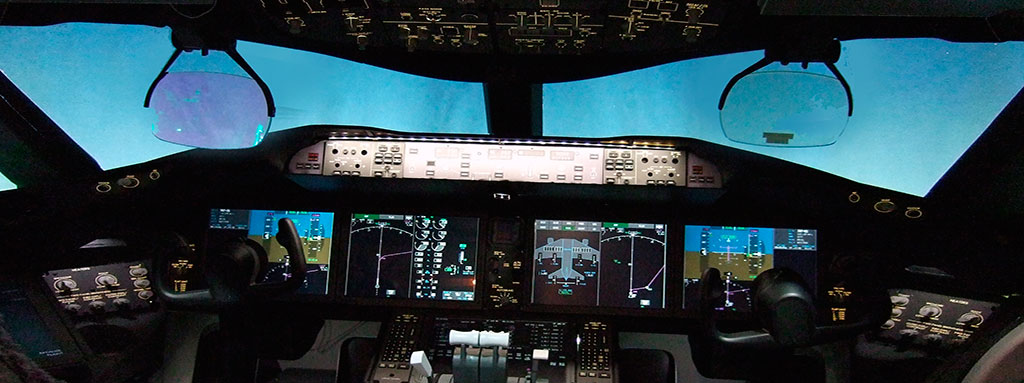My colleague Fernando Moraleda recently discussed how aeronautical manufacturing processes have been enhanced thanks to the technology boom we are currently undergoing in his article entitled “Progress in Aeronautical Process Optimisation”.
Why not replace obsolete control panels with touch screens like the ones used so widely on our smartphones today?
A great many enhancements could be implemented linked to this technology boom in an area which is still almost untouched by it, namely avionics systems. In its day, Airbus pioneered fly-by-wire technology, which consists of doing away with an aircraft’s mechanical control elements and replacing them with electrical elements. I’d like to go one step further.
Avionics systems design today is based on prehistoric models (technologically speaking). With regard to communication between different pieces of equipment, relays, diodes, connection modules and wires are used to transmit something as small as an information status. In most cases, it is a status with just two possibilities; in other words, a bit of information. By grouping such information together in data buses and frames, thereby reducing electrics to electronics, significant savings can be achieved in the installation of an aircraft’s wiring. This in turn leads to weight and manufacturing cost savings, in addition to cutting operators’ associated maintenance costs.
Why not replace obsolete control panels with touch screens like the ones used so widely on our smartphones today? These touch screens would have the same underlying hardware and could be configured by software. This would reduce manufacturing and storage costs, as not so many different part numbers would be needed to provide support to clients, and would offer the possibility of manufacturing them in greater numbers at a lower cost.
Lastly, software-configurable hardware is already a reality through FPGAs (Field Programmable Gate Array) technology, which is booming and whose price is rapidly falling. Why not manufacture the same kind of hardware having different software “souls”. As in the case of control panels, lower manufacturing and storage costs could be achieved, not to mention a reduction in the operator’s maintenance costs.
All of the above is not aimed at making an exhaustive analysis of the myriad enhancements that could be implemented in the field of avionics over the coming years, but rather simply sketching out what we may find in the cabin of any aircraft in the not so distant future.



